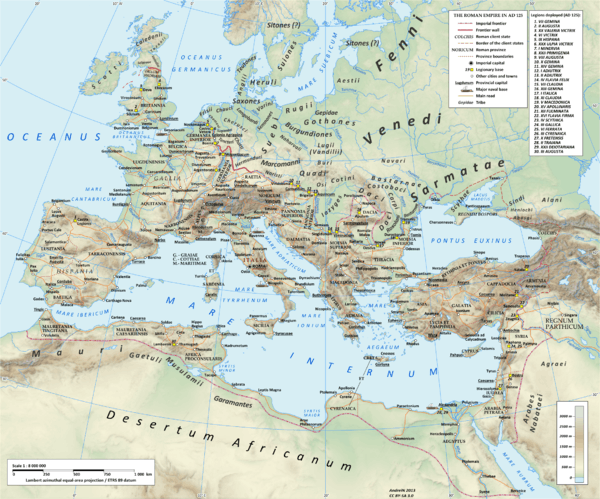Roxolani

The Roxolani ( from Alanic ruxsalan- "bright alan") were a Sarmatian people , who are believed to be an off-shoot of the Alans, although according to Strabo they were the most remote of Scythian peoples.[1] Their first recorded homeland lay between the Don and Dnieper rivers; they migrated in the 1st century BC toward the Danube, to what is now the Baragan steppes in Romania.
The Greco-Roman historian Strabo (late 1st century BC-early 1st century AD) described them as "wagon-dwellers" (i.e. nomads) (Geographika, Book VII).
Around 100 BC, they invaded the Crimea under their king Tasius in support of the Scythian warlord Palacus but were defeated by Diophantus, general of Mithradates VI.
In the mid-1st century AD, the Roxolani began incursions across the Danube into Roman territory. One such raid in AD 68/69 was intercepted by the Legio III Gallica with Roman auxiliaries, who destroyed a raiding force of 9,000 Roxolanian cavalry encumbered by baggage. Tacitus (Hist. Bk1.79) describes the weight of the armor worn by the 'princes and most distinguished persons' made 'it difficult for such as have been overthrown by the charge of the enemy to regain their feet' The long two-handed kontos lance, the primary melee weapon of the Sarmatians, was unusable in these conditions. The Roxolani avenged themselves in AD 92, when they joined the Dacians in destroying the Roman Legio XXI Rapax.
During Trajan's Dacian Wars, the Roxolani at first sided with the Dacians, providing them with most of their cavalry strength, but they were defeated in the first campaign of AD 101–102. They appear to have stood aside as neutrals during Trajan's final campaign of AD 105–106, which ended in the complete destruction of the Dacian state. The creation of the Roman province of Dacia brought Roman power to the very doorstep of Roxolani territory. The Emperor Hadrian reinforced a series of pre-existing fortifications and built numerous forts along the Danube to contain the Roxolani threat.
Later, Marcus Aurelius also campaigned against the Roxolani along the Danubian frontier. They are known to have attacked the Roman Province of Pannonia in 260; shortly afterwards contingents of Roxolani troops entered Roman military service.
Like other Sarmatian peoples, the Roxolani were conquered by the Huns in the mid-4th century. Later, some of the Roxolani cataphracts become part of the Clan of Ostoja.
The Rus/Roxolani hypothesis
A number of Russian anti-Normanist historians, such as Dmitry Ilovaisky, have linked the Roxolani with the Slavic Rus, who appeared in Eastern Europe some four centuries after the disappearance of the Roxolani. Such theories continue to be popular in Russia to this day. A wife of the 16th-century Ottoman Sultan Süleyman the Magnificent was known as Roxelana, an appellation which indicated her Ukrainian Slavic origin. Similary, two villages in the Republic of Macedonia are called Ros and Rosoman, indicating that the Roxolani also influenced the South Slavs. Another village with exactly same name can be found on left bank of Dnister river: Roksolany Odessa Oblast, Ucraina 46.175, 30.457
Resources
![]() This article incorporates text from a publication now in the public domain: Chisholm, Hugh, ed. (1911). Encyclopædia Britannica (11th ed.). Cambridge University Press.
This article incorporates text from a publication now in the public domain: Chisholm, Hugh, ed. (1911). Encyclopædia Britannica (11th ed.). Cambridge University Press.